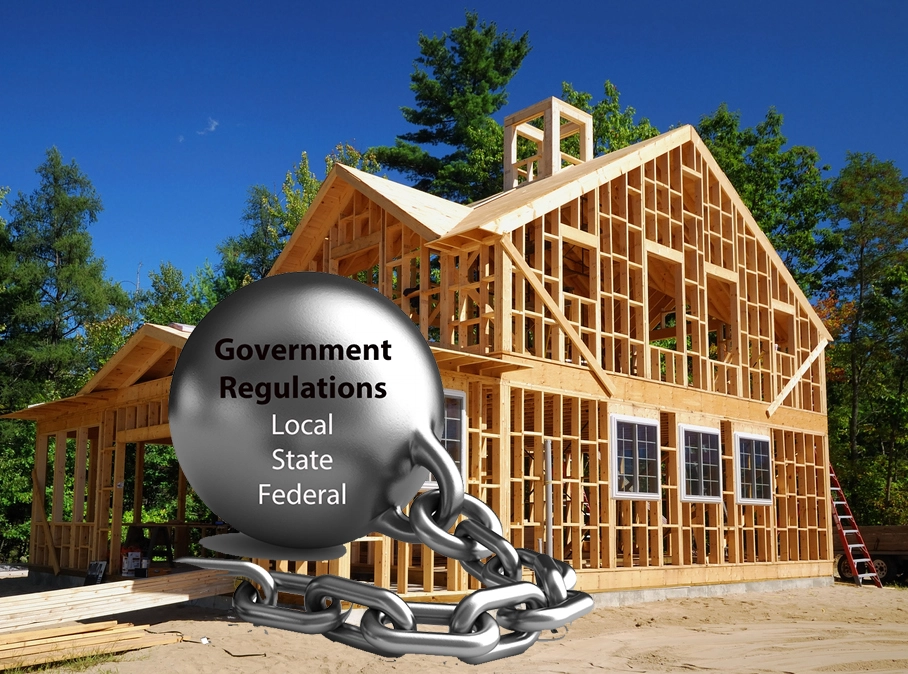

Key Takeaways
- Mandated energy codes can add substantial upfront costs to new homes (e.g., 2021 IECC), which reduces affordability for entry-level buyers.
- Energy choice matters: allowing multiple fuel/appliance options helps builders meet budgets and buyers’ needs across different climates and infrastructures.
- Total cost of ownership should drive policy—some mandated upgrades take many years to pay back, depending on climate and usage.
- The most powerful levers are public policies (codes, appliance standards, fuel rules), not buyers, sellers, agents, or appraisers.
- Action items: elect officials who balance consumer protection with affordability, support policies that preserve energy choice, and target older housing stock for practical efficiency gains.
Contact Form
The Hidden Costs of Mandates: Why Energy “Choice” is Critical for Affordable Housing
Energy mandates and affordable housing are directly connected, shaping one of America's most pressing crises. Home prices and rents are rising faster than incomes. New housing supply is failing to keep up. Many potential homebuyers are being shut out—not by their credit scores, savings, or the real estate market alone—but by well-meaning regulations that quietly drive up costs. The link between energy mandates and affordable housing has become clearer as regulatory costs mount.
This article was informed by and responds to the National Association of Home Builders’ recent statement urging Congress to protect energy choice and maintain flexibility in building energy codes to keep homes affordable (NAHB, Sept. 9, 2025).
What the Numbers Show
- Mandates on energy building codes, appliance standards, and fuel restrictions can raise construction costs. NAHB has testified that building to the 2021 International Energy Conservation Code (IECC) can add up to $31,000 to the price of a new home in practice.
- Cost studies summarizing Home Innovation Research Labs analyses show national average added construction costs on the order of $9,600–$21,400 to comply with the 2021 IECC (varies by climate zone). See NAHB’s aggregated cost table here (Table 1) and the underlying methodology memo here.
- For households, winter heating expenditures depend on weather and region, but U.S. Energy Information Administration (EIA) outlooks consistently show lower average heating expenditures for natural gas households than for electricity-heated homes. See EIA’s Winter Fuels Outlook summaries (Oct. 8, 2024 press release) and the Outlook page here.
Why Energy Choice Matters
- Flexibility lets builders tailor homes to what buyers can afford and what local infrastructure supports.
- Total cost of ownership matters: upfront code mandates may take decades to “pay back” via energy savings, especially in certain climates—see NAHB’s testimony and analyses cited above.
- Market access: Each additional mandated cost can push entry-level buyers out of homeownership.
The Core Issue: Not Agents, Not Builders — Policy
It’s easy to blame market participants, but the most powerful levers are public policies that determine:
- Which energy & building codes are mandatory, and how quickly they tighten
- What appliances qualify for sale and installation
- Which fuels can or cannot be used
NAHB has urged Congress to preserve energy choice and code flexibility to support affordability (press release).
What Needs to Happen
- Elect representatives who understand cost-benefit tradeoffs and the affordability impacts of codes.
- Hold decision-makers accountable for rules that raise housing costs without clear, timely consumer payback.
- Support consumer choice policies, including proposals like the Energy Choice Act, which NAHB supports.
- Target older housing stock for measured efficiency upgrades where paybacks are clearer, rather than pushing large, front-loaded costs into every new home.
Everyone’s Role – Vote, Speak, Engage
- Vote in local, state, and federal elections—housing rules are often set closest to home.
- Engage: Ask your representatives how proposed code changes affect affordability and energy bills.
- Stay informed: Follow NAHB and EIA updates on code proposals and energy-cost outlooks (links below).
Call to Action
The housing crisis isn’t caused by buyers, sellers, agents, or appraisers. It rests largely with elected officials—federal, state, county, and local—whose policies shape costs and choices. If we want attainable homes, we must vote for leaders who balance consumer protection with affordability and allow practical energy choice.
Sources & Further Reading
- NAHB Press Release: “NAHB Calls on Congress to Protect Energy Choice” (Sept. 9, 2025).
- NAHB Testimony/Press: Costs & payback concerns for 2021 IECC (May 22, 2024); NAHB blog recap here.
- Cost Tables (Home Innovation Research Labs summaries): “2021–2024 IECC Added Construction Costs” (Table 1); Methodology memo “2021 IECC Cost-Effectiveness Analysis (HIRL)”.
- EIA Winter Fuels Outlook: Outlook page and 2024–25 press summary (relative costs by fuel and expected expenditures).
- Energy Choice Act overview (NAHB): bill summary & NAHB position.
Note: Energy cost projections vary by region and winter weather. Figures cited above reflect the sources and publication dates linked.
Robert Smith — NYS Licensed Real Estate Broker; NYS Licensed Real Estate Instructor (CDEI); 40 years’ experience in the real estate industry; served over a decade as Chair of the Town of Cicero Planning Board.
Robert and Cindy Smith own and operate the Professional Career Center, a NYS Licensed Real Estate School in Syracuse, New York.
Questions? bob@pccsyr.com
